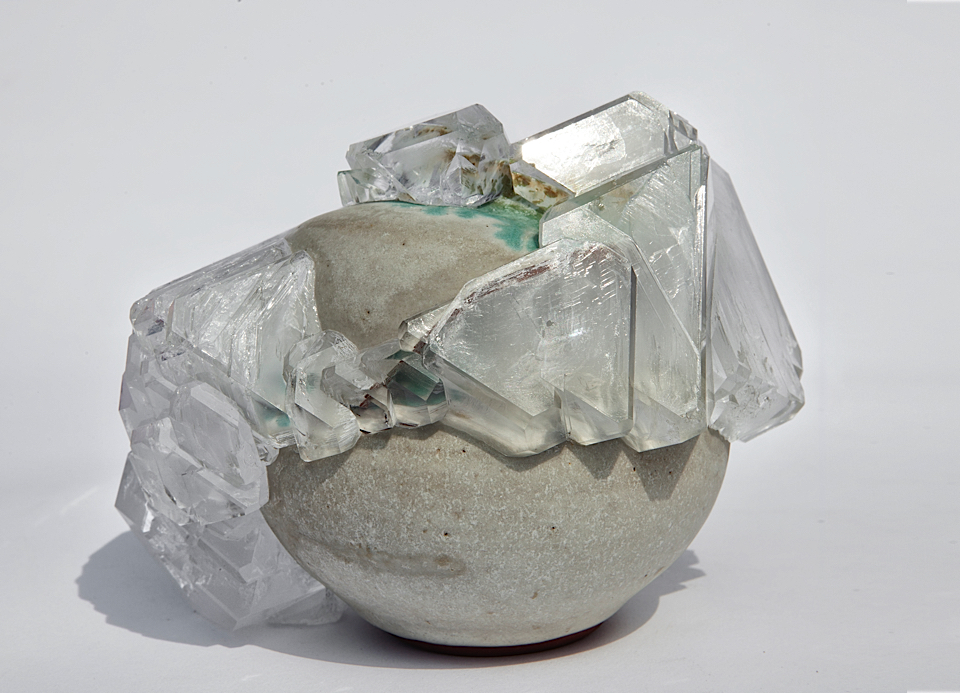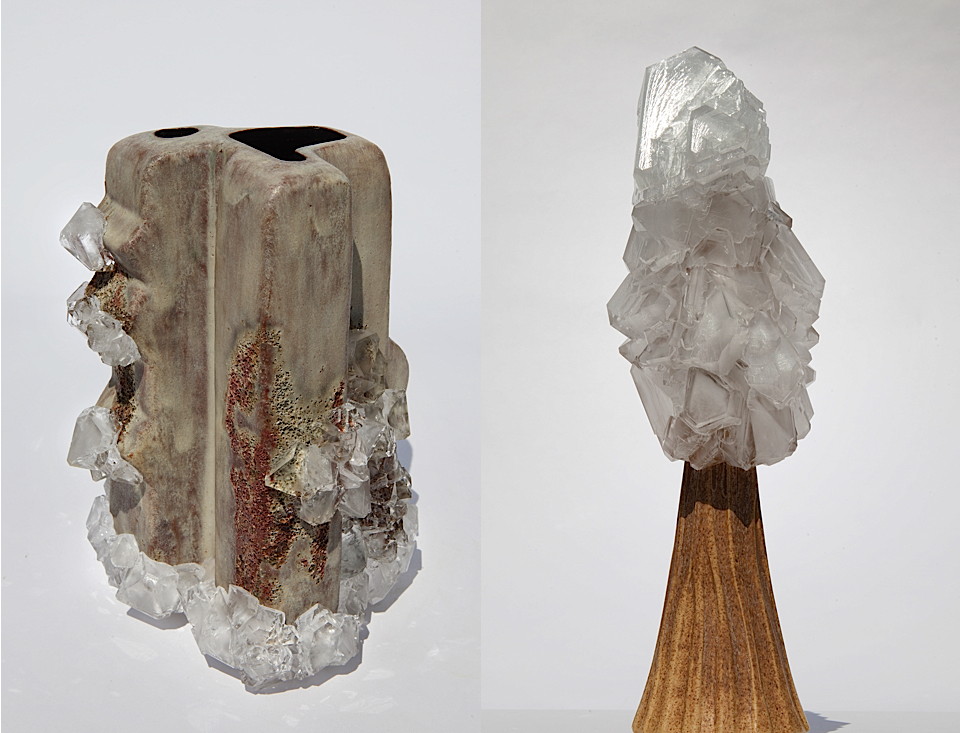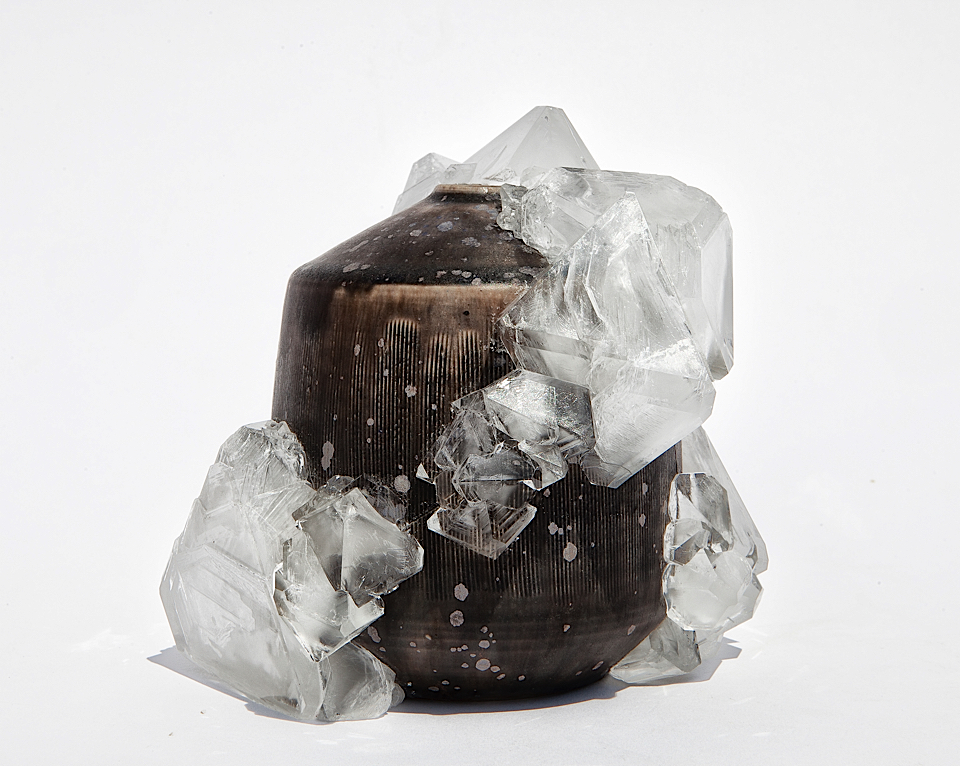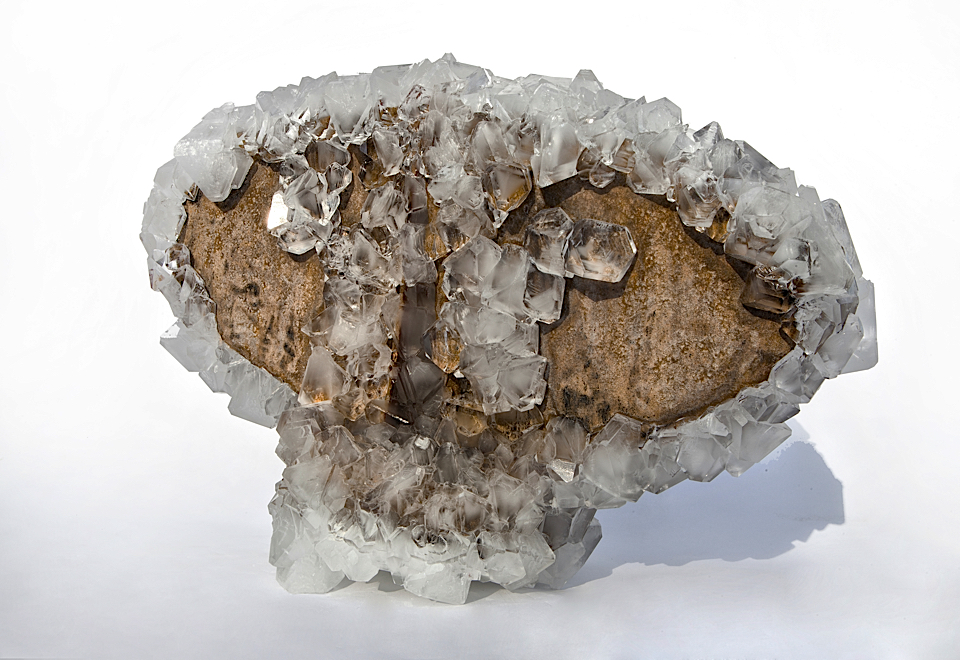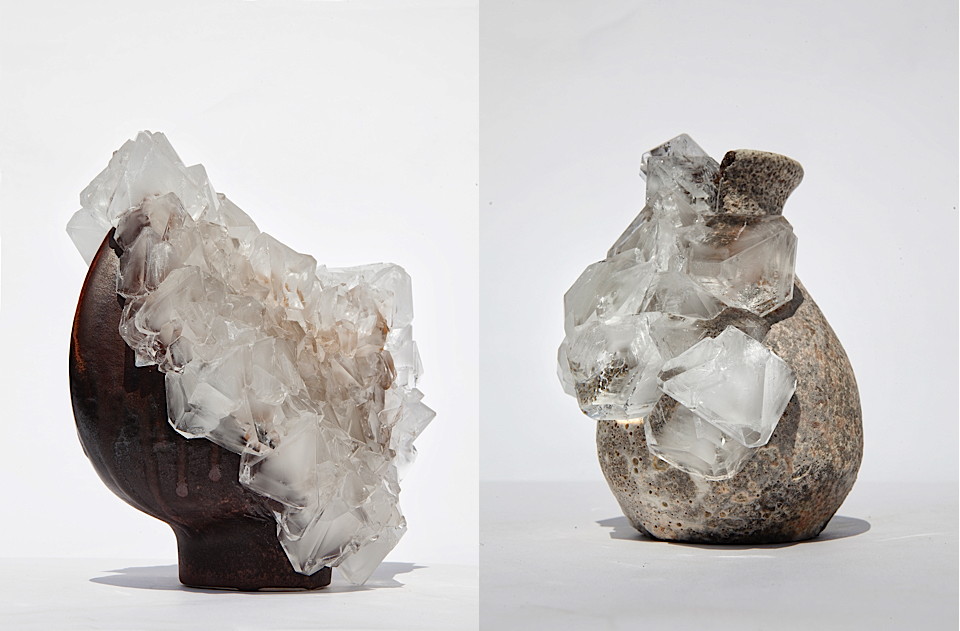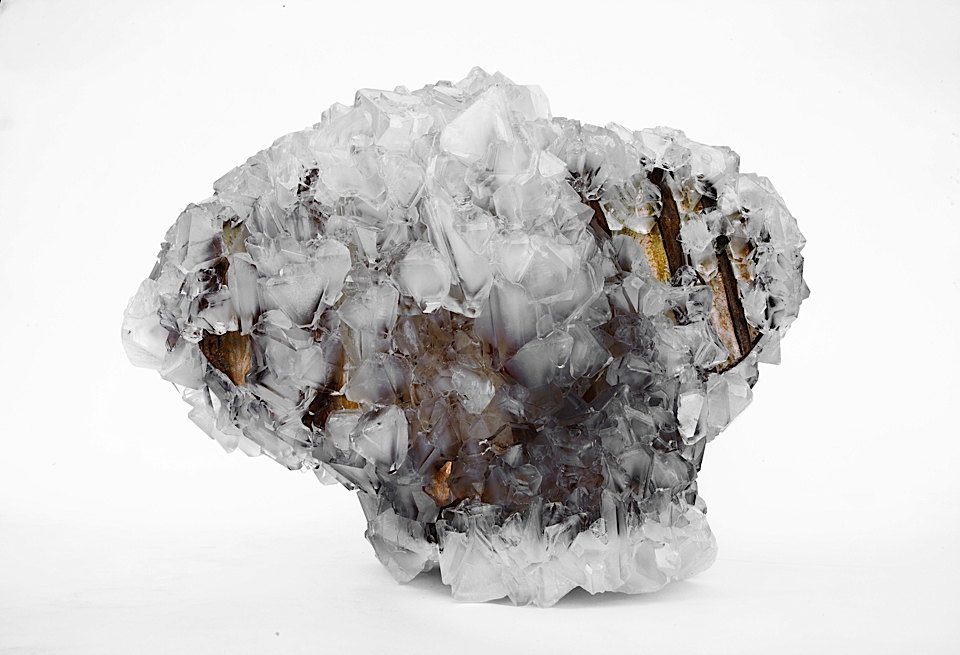EARTH MATTERS
lukas wegwerth
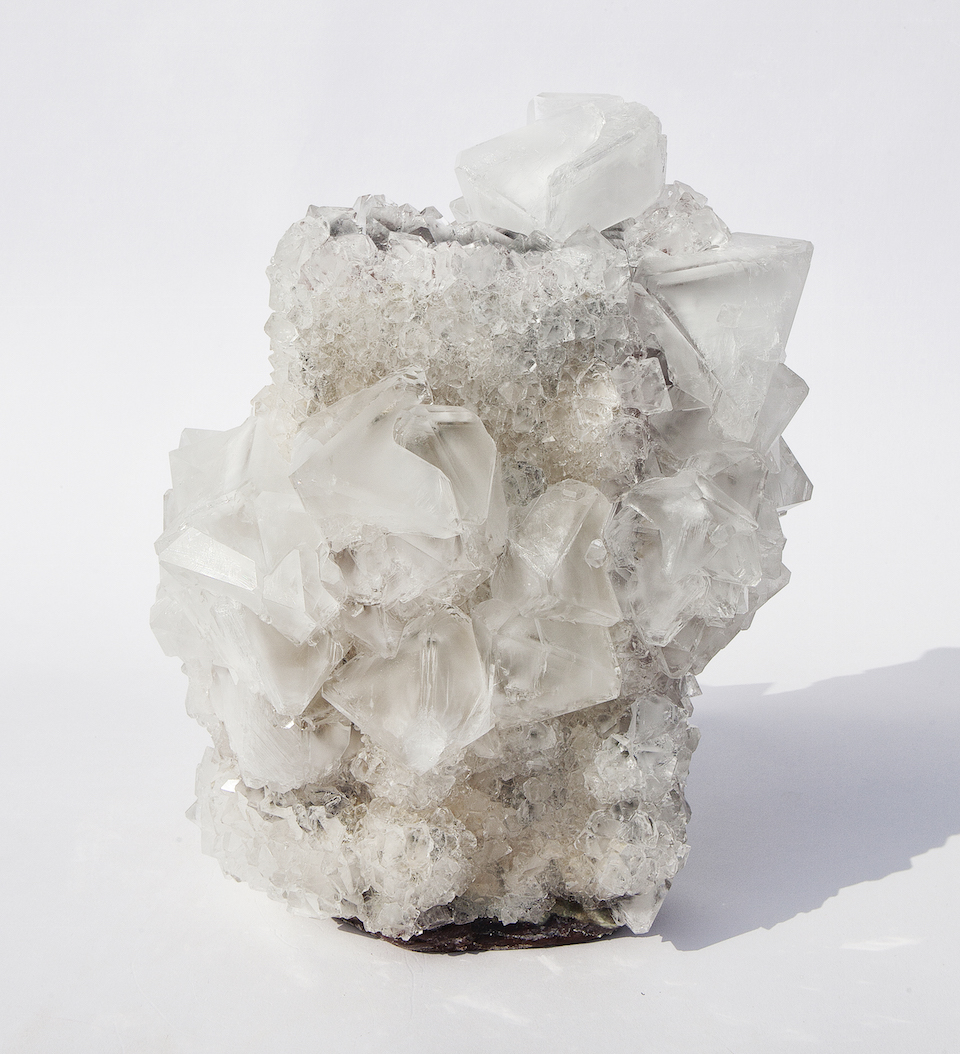
For Berlin based artist Lukas Wegwerth, crystals serve as a glue that gives a glamourous second life to broken ceramic objects. In some ways, Wegwerth is like a modern day alchemist. When looking for a solution to fix a favorite broken teapot, he became intrigued by the Japanese method of applying gold dust in the glue to purposely reveal the fissures in a broken vessel, and as such, elevating the object to a new status. After lengthy research and experimentation, he developed a process of applying a special salt-based solution along the unglazed edge of the ceramic. Overtime the crystals flourish and expand in unimaginable ways, as if transforming, Terminator style, right before our eyes.
Reusing found objects, or upcycling, is a common practice in art and design; Old t-shirts made into a blanket or plywood planks from shipping crates turned into an elegant dining table for example, but broken ceramics seem a harder lot to revive. Yet there is a real value in repurposing an object in a beautiful way and Wegwerth is attracted to the idea of the history of an objects worth and its potential for rebirth.
Each piece is uniquely its own with exquisite details, unimaginable formations, colors and textures. Beautiful and corrosive at the same time, crystals possess a mysterious and transformative quality that people are attracted to for many reasons, from inherent healing properties, magical associations, or just for their sheer beauty. Crystals can add a sense of warmth to an environment, and render it more welcoming. They are an ideal synthesis of science and the natural world, and Wegwerth’s objects have the same appeal. You want to touch it, possess it. The objects are tactile, inviting, explosive and inherently dysfunctional, and all of these contradictory qualities create a work that reveals as much as it disguises. The hybrid qualities feel relevant in our times as well. Transformation is in the news a lot these days, from gender related issues to altered realities, or even the possibilities with 3-D printing. Wegwerth’s vessels evoke their own sort of hybrid-identity, a formerly functional, everyday object masked by exotic crystalline flora. They are organic and manipulated, humble and baroque, art as well as craft.
The crystallization process can take on different colors, from translucent white, pinks, lavender or deep burgundy. This is the result of using two different salts, one of which will be colorful and the other which creates volume. Though Wegwerth controls the growth of crystals as much as possible, there is an element of the unknown in this creative process. The salt can react with the glaze to make unexpected colors or formations for example, and because of this, he has been known to keep the vessels in his studio for lengthy periods of time, even up to two-years, to observe how they mature and settle, and often re-working a piece again and again to get the right results. Recently he has found more interest in the transparent white crystals, preferring their reaction and appearance on the individual ceramic vessels. As his understanding of the crystalline process is evolving and he discovers new ways to control and direct the growth, he is becoming more fascinated with the possibilities of this unique material. It will be interesting to see how this project develops.
Blaire Dessent
All photos courtesy of Gallery FUMI
lukaswegwerth.com
Blaire Dessent is an American in Paris working as a cultural writer, copywriter and translator with a specialization in the cultural and lifestyle industries including contemporary art, design, fashion and beauty. She is also special projects manager for American design at Triode, a leading design showroom located in the 6th arrondissement in Paris.
www.blairedessent.com
